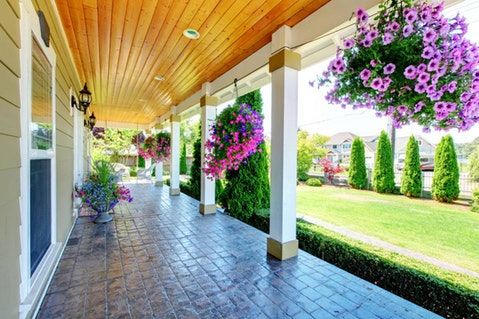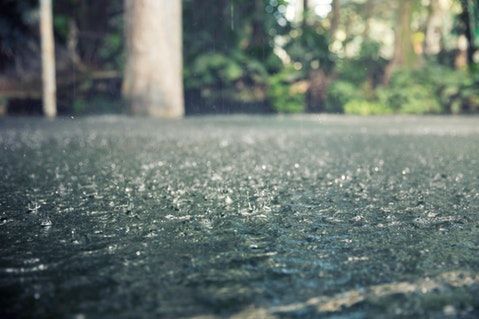Homeowner Insurance
We’ll shop and help you save on your Florida Homeowner insurance.
Homeowner Insurance
How Much Home Insurance Do I Need in Florida?
If you’re a Florida homeowner, you’ve probably asked yourself: “Am I fully covered if something happens to my house?” That’s a smart question — and one we hear often from clients looking for home insurance in Jacksonville, St. Augustine, Orange Park, and other Florida communities.
The short answer? It’s not about your home’s market value or tax-assessed value. What really matters is what it would cost to rebuild your home today if it were destroyed by a covered loss. That’s the foundation of your Coverage A – Dwelling limit.
Rebuild Cost vs. Market Value vs. Tax Value
Rebuild Cost (also called Replacement Cost) is the cost to rebuild your home using similar materials, finishes, and local labor. It doesn’t include the value of the land — just the house itself. In Jacksonville, rebuilding a 2,000-square-foot home could cost $400,000 or more, even if that home would sell for less on the market.
As of May 2025, we’ve seen rebuild costs in parts of Jacksonville — like Mandarin, San Marco, and the Beaches — often exceed $200 per square foot. Local construction demand, custom finishes, and updated building codes all factor into these rising prices.
Market Value is what someone might pay for your home and land combined. It fluctuates based on the real estate market, neighborhood, and other factors. It’s not a reliable number for setting insurance limits.
Tax Assessed Value is what the county uses to determine your property taxes. It’s usually far lower than either market or rebuild value and should never be used to determine your home insurance coverage.
Florida-Specific Factors That Affect Rebuild Costs
Florida homeowners face unique challenges that make accurate rebuild coverage even more important:
- Hurricanes and Wind Codes: Stronger building codes can increase the cost of rebuilding after a storm.
- Labor and Material Surges: After a hurricane, demand spikes — and so do prices for materials and contractors.
- Local Ordinances: Older homes may need costly upgrades to meet today’s codes if they're rebuilt.
- Permit and Supply Delays: Rebuilding can take longer — and cost more — due to backlogs and supply chain issues.
What Coverage Should You Review with your Insurance Agent?
When we talk about getting your home properly insured, there are a few key coverages you’ll want to understand — and reach out to your agent each year to make sure they still fit your needs.
Coverage A – Dwelling should be based on the true cost to rebuild your home today. Agents can use advanced software and local data to help estimate the cost of rebuilding your home
Coverage C – Personal Property protects your belongings. Most policies automatically cover 50% of the dwelling limit, but you may need more or less depending on what you own.
Coverage E – Liability protects you financially if someone is hurt on your property or you’re held legally responsible for damage to others. We typically recommend at least $300,000 in liability coverage — or more if you have significant assets.
Also consider optional coverages like inflation guard, which adjusts your policy limits annually to keep up with rising costs, and extended replacement cost, which we’ll talk more about below.
⚠️ Occupancy Matters: Don’t Risk a Denied Claim
It’s important to talk with your insurance agent any time the occupancy of your home changes—whether it’s owner-occupied, tenant-occupied, used as an Airbnb, unoccupied, or vacant. Coverage can change based on how the property is used, and failure to update your policy could lead to denied claims.
Create a Home Inventory
If you ever file a claim, having a detailed home inventory can make a huge difference. Walk through each room with your phone and narrate what’s inside, save receipts for high-value items, and store your list in the cloud or somewhere off-site. We also offer a free Home Inventory Worksheet if you'd like help getting started.
Protecting High-Value Items
Standard policies limit how much they’ll pay for items like jewelry, art, collectibles, or firearms. If you own high-value items, ask us about scheduled personal property coverage. This optional add-on can fully protect specific items and often waives the deductible for those claims.
What Is Extended Replacement Cost?
In Florida, many insurance companies offer extended replacement cost coverage — and it can make a big difference after a major loss. This optional upgrade adds an extra 20% cushion to your dwelling limit, giving you more protection if rebuilding costs end up higher than expected.
📌 Real-World Example (Florida Style):
If your Jacksonville home is insured for $400,000, extended replacement cost coverage would increase your protection to $480,000. That’s an additional $80,000 in coverage — a major help if building materials and labor costs spike after a hurricane (which we’ve seen happen again and again in Florida).
💵 How Much Does It Cost?
Extended replacement cost typically adds around 10% to your annual home insurance premium. For many Florida homeowners, that’s a small price to pay for peace of mind — especially when storm seasons bring unpredictable rebuilding costs, shortages, and delays.
📣 It’s not included automatically, so be sure to ask your agent if extended replacement cost is already part of your policy — or if it can be added. If you're not sure, reach out to us. It’s one of the smartest ways to protect your home investment in Florida.
Do You Need Extra Liability Protection?
If someone is injured on your property — or if you’re held responsible for damage to someone else’s property — liability coverage kicks in. Most policies include $100,000 to $300,000, but for many homeowners, especially those with savings, retirement accounts, or rental properties, we recommend adding a personal umbrella policy for an additional $1 million or more in coverage. It’s surprisingly affordable and also extends to your auto insurance liability limits.
How to Know You’re Covered Properly
Here’s a quick self-check:
- ✅ Your dwelling coverage (Coverage A) is based on current rebuild cost
- ✅ You’ve reviewed your personal property coverage
- ✅ You’ve added coverage for high-value items and flood (if needed)
- ✅ You have enough liability protection in place
- ✅ You review your policy yearly or after major home updates
- ✅ You’ve created a home inventory
Let’s Review Your Coverage Together
Your home is one of your biggest investments. At Augustyniak Insurance, we’ve helped thousands of Florida families protect what matters most — and with over 2,000 five-star Google reviews, we’re proud to be one of Jacksonville’s most trusted insurance agencies.
Check out our 2024 list of the Top 25 Florida Homeowners Insurance Companies.
Frequently Asked Questions
Should I insure my home for market value or rebuild cost?
You should insure it based on rebuild cost — not market value or tax assessment. Rebuild cost reflects what it would take to reconstruct your home today.
How do I calculate my home’s rebuild cost?
Ask your insurance agent to walk through a replacement cost estimate with you. This is an up to date software based local construction data to help you determine the rebuild cost. This guide evaluates your home’s square footage, materials, finishes, and current labor rates — to calculate what it would cost to rebuild your home today.
What is Coverage A?
Coverage A is the part of your homeowners policy that insures the structure of your home. It’s based on the cost to rebuild — not what you paid for it or what it’s worth on the market.
Do I need special coverage for valuables?
Yes — high-value items like jewelry or collectibles often exceed standard limits. We can schedule those items separately for full protection.
What’s a personal umbrella policy?
An umbrella policy gives you extra liability protection above your home and auto policies — typically in $1 million increments. It’s an affordable way to protect your finances.
Related Articles to Help You Understand Florida Home Insurance
- 📋 Why You May Need a 4-Point Inspection in Florida
- 🏆 Top 25 Florida Homeowners Insurance Companies (2024)
- For more on Florida building codes, see the Florida Building Commission.
Last updated: June 2025

 Get a
Get a 


